Last weekend the 58th edition of the Venice Biennale officially opened. The most prestigious exhibition of contemporary art in the world this year sees the participation of 79 invited artists and 90 guest countries. As promised by the title “May You Live in Interesting Times”, an invitation to live the complexity of the era in which we live with interest and enthusiasm, the challenge of the curator Ralph Rugoff, director of the Hayward Gallery in London, is to propose a surprising path that hit the heart to get to the head. Starting from the assumption that art is more than a mere documentation of the historical period in which it is realized and that therefore it must adhere to the most urgent needs of the present to offer an alternative view that raise questions and undermine consolidated attitudes, the key word of this edition was involvement. In dialogue with the international exhibition, most of the national pavilions have also accepted the curatorial suggestion of presenting intriguing and immediate readings, sometimes trespassing in wonder as an end in itself and in the search for an easy effect.
We propose below an itinerary among the proposals that we believe have been more convincing for the synergy between communicative effectiveness, aesthetic coherence and message depth.
Let’s start with the French Pavilion hosting the monographic project Deep See Blue Surrounding you by Laure Provost, accessible during the days of the preview only after a long wait outside the building. From the entrance, the visit is configured as an initiatory journey, in which the visitor goes through a dark cave that simulates a ruined building site to access a surreal room where the floor simulates a residual seascape in which gleaming contemporary debris mix with alive and artificial animals. The heart of the exhibition is the video, in which the artist tells the story of a heterogeneous group of characters from the Parisian suburbs to the North of France to arrive in Venice. The liquid element is here interpreted as a magical and amniotic connection between man, his unconscious and the different life forms that populate the Earth in an exciting mix of perspectives and plans of reality. In this fluid and globalized world, migration, pollution, cultural and generational barriers come together in a visceral mass, a hymn to experience to live without filters and to feel on the skin.
In the Israeli Pavilion, re-adapted as a field hospital by Aya Ben Ron, the visitor turns into a patient, he takes a number and waits for his turn in a waiting room, disturbingly similar to a real nursing home where he attends the FHX television program which provides information on the ethics of the care he will receive. The wait emphasizes the condition of impotence and tension of those who must entrust their mental and physical health to others. When called, he chooses a Risk Bracelet at the Reception Desk and is guided into a lined and soundproofed bunker room in which a recorded voice guides him in the first phase of therapy: a liberating cry, a renewed connection with the power of his own voice to oppose inertia and provoke change. The second phase consists of watching a video, selected by nurse-performers based on the type of bracelet chosen, to be viewed individually in an armchair that recalls those of dentists or gynecologists in a room shared with other visitors-patients. The installation intelligently investigates the essence of medical ethics as a relationship between the patient and the caregiver, identifying mutual fundamentals and trust as the foundations of human and social solidarity that could contribute to a decisive cure for traumas that afflict the world.
Angelica Mesiti transforms the Australian Pavilion into an architecture of power in which the chambers of the Senate of Italy and Australia can be recognized. Visitors are invited to sit in a circular amphitheater (where they then become community and assembly) to watch a fragmented film on three monumental screens. The video shows the rewriting of a poem by Australian writer David Malouf with the shorthand Michela (used in parliamentary classrooms to draw up the minutes of the sessions) and its subsequent transposition into music and performance with different instruments by a series of musicians. In an extremely critical historical moment for democracy, the artist explores the transformative power of the media and the meanings implicit in non-verbal languages. Passing through phases of silence, polyphony, dissonance and cacophony that culminate in a temporary harmony, the sounds and gestures stage the infinite possibilities of remodeling of a fluid social body, suggesting at the same time that no codified language manages to stem the continuous production of difference generated by the friction between individuality and collectivity.
The Romanian Pavilion brings together the works of three artists characterized by a post-conceptual approach that field an aesthetic of the sublime interpreted as a poetically critical tool towards neoliberalism, nationalism and populism in open opposition to the abuse of symbols of power in culture contemporary visual. The works by Belu Simion Făinaru, Dan Mihălțianu and Miklós Onucsán establish an Unfinished Conversations on the Weight of Absence which emphasize the dialogic qualities of art and its ability to detect flaws and aporias in our usual perception of reality. A philosopher and poet avatar, a bookcase crammed with volumes with completely white pages, a washing machine-alcove flanked by a talking plant and a black lake already receptacle of superstitious coins create a suspect and anti-monumental landscape in which even the apparently more ordinary elements hide pitfalls and mental traps.
The Nordic Countries Pavilion in Weather Report exhibition: Forecasting Future reflects on the complex relationship between human and non-human at a time when climate change and mass extinction threaten the future of life on Earth. The works by the Finnish duo Nabbteeri, the Norwegian Ane Graff and the Swedish Ingela Ihrman, united by multidisciplinary creative processes that combine art, humanities and natural sciences, create a hybrid setting where real biological and botanical experiments pass into virtual reality and installations sculptures conceived as multi-species assemblies. Accomplices the beautiful light of the Pavilion, designed by the Norwegian architect Sverre Fehn and completed in 1962, and the presence inside of the large trees that make it unique, the references between the works build an immersive environment in which the visitor is invited to experiment new forms of empathy with other real or imaginary life manifestations. And when the enchantment lowers his rational defenses, the awareness of the ethical necessity, which is nowadays actual, to renegotiate the relations between the species in the sign of mutual sustainability spontaneously emerges.
The Lithuanian Pavilion (Fondamenta Case Nuove 2738c) created by the artists Lina Lapelyte, Vaiva Grainyte and Rugile Barzdziukaite and awarded with the Golden Lion for best National Participation, has transformed the interiors of the Marina Militare building into an artificially lit beach without sea full of bathers lying on colorful towels. The opera-tableau vivant Sun & Sea (Marina), in which the viewer observes the scene from above as if he were the sun that blinds the heterogeneous group of unarmed vacationers in their semi-nakedness is, as the jury’s reasons state during the awarding of the prize, “a critique of free time and contemporary life, sung by the voices of a group of performers and volunteers”. During the performance the quiet summer day dotted with futile or bored occupations turns into poetry, with a succession of monodias that then come together in choral singing in which each character intones his own concerns. The apparent lightness of the crowded beach dissolves and gives way to a universal lament of Brechtian memory in which planetary scale problems merge with the constitutive fragility of the human being.
To conclude, let us mention the Ghana Pavilion at Arsenale, one of the four debut countries in this edition of the Biennale together with Madagascar, Malaysia and Pakistan. The exhibition, entitled Ghana Freedom, is highly illustrative of the artistic “black” intonation trends that in recent years have been conquering Western collectors and institutions with the power of a direct and disruptive expressive language that eschews sophisticated conceptualizations. On display there are large-scale installations by El Anatsui and Ibrahim Mahama, portraits by the photographer Felicia Abban and by the painter Lynette Yiadom-Boakye, a three-channel cinema screening by John Akomfrah and a video sculpture by Selasi Awusi Sosu. As the title suggests, the works explore legacy and trajectories of freedom, which the nation conquered only in 1957 when its independence from the United Kingdom was sanctioned, through three generations of artists united by a strong feeling of pan-Africanism and pride for their origins.
Info:
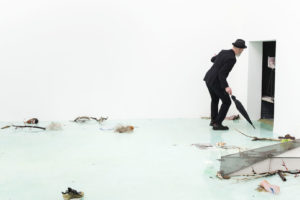 Pavilion of FRANCE. Deep see blue surrounding you / Vois ce bleu profond te fonder
Pavilion of FRANCE. Deep see blue surrounding you / Vois ce bleu profond te fonder
58th International Art Exhibition – La Biennale di Venezia, MayYou Live In Interesting Times Photo by: Francesco Galli
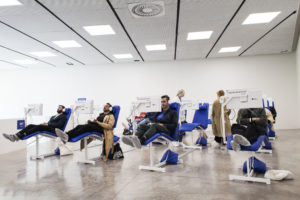 Pavilion of ISRAEL, Field Hospital X
Pavilion of ISRAEL, Field Hospital X
58th International Art Exhibition – La Biennale di Venezia, MayYou Live In Interesting Times Photo by: Francesco Galli
 Pavilion of AUSTRALIA, Assembly
Pavilion of AUSTRALIA, Assembly
58th International Art Exhibition – La Biennale di Venezia, MayYou Live In Interesting Times Photo by: Francesco Galli
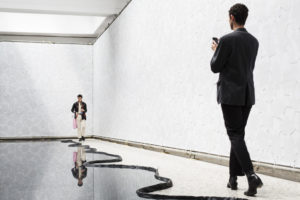 Pavilion of ROMANIA, Unfinished Conversations on the Weight of Absence
Pavilion of ROMANIA, Unfinished Conversations on the Weight of Absence
58th International Art Exhibition – La Biennale di Venezia, MayYou Live In Interesting Times Photo by: Francesco Galli
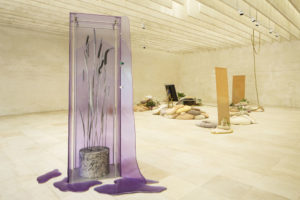 Pavilion of NORDIC COUNTRIES (FINLAND-NORWAY-SWEDEN), Weather Report : Forecasting Future
Pavilion of NORDIC COUNTRIES (FINLAND-NORWAY-SWEDEN), Weather Report : Forecasting Future
58th International Art Exhibition – La Biennale di Venezia, MayYou Live In Interesting Times Photo by: Francesco Galli
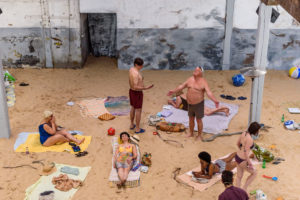 Pavilion of LITHUANIA, Sun & Sea (Marina)
Pavilion of LITHUANIA, Sun & Sea (Marina)
58th International Art Exhibition – La Biennale di Venezia, MayYou Live In Interesting Times Photo by: Andrea Avezzù
 Pavilion of GHANA, Ghana Freedom
Pavilion of GHANA, Ghana Freedom
58th International Art Exhibition – La Biennale di Venezia, MayYou Live In Interesting Times Photo by: Italo Rondinella
For all images: courtesy La Biennale di Venezia
Graduated in art history at DAMS in Bologna, city where she continued to live and work, she specialized in Siena with Enrico Crispolti. Curious and attentive to the becoming of the contemporary, she believes in the power of art to make life more interesting and she loves to explore its latest trends through dialogue with artists, curators and gallery owners. She considers writing a form of reasoning and analysis that reconstructs the connection between the artist’s creative path and the surrounding context.






NO COMMENT